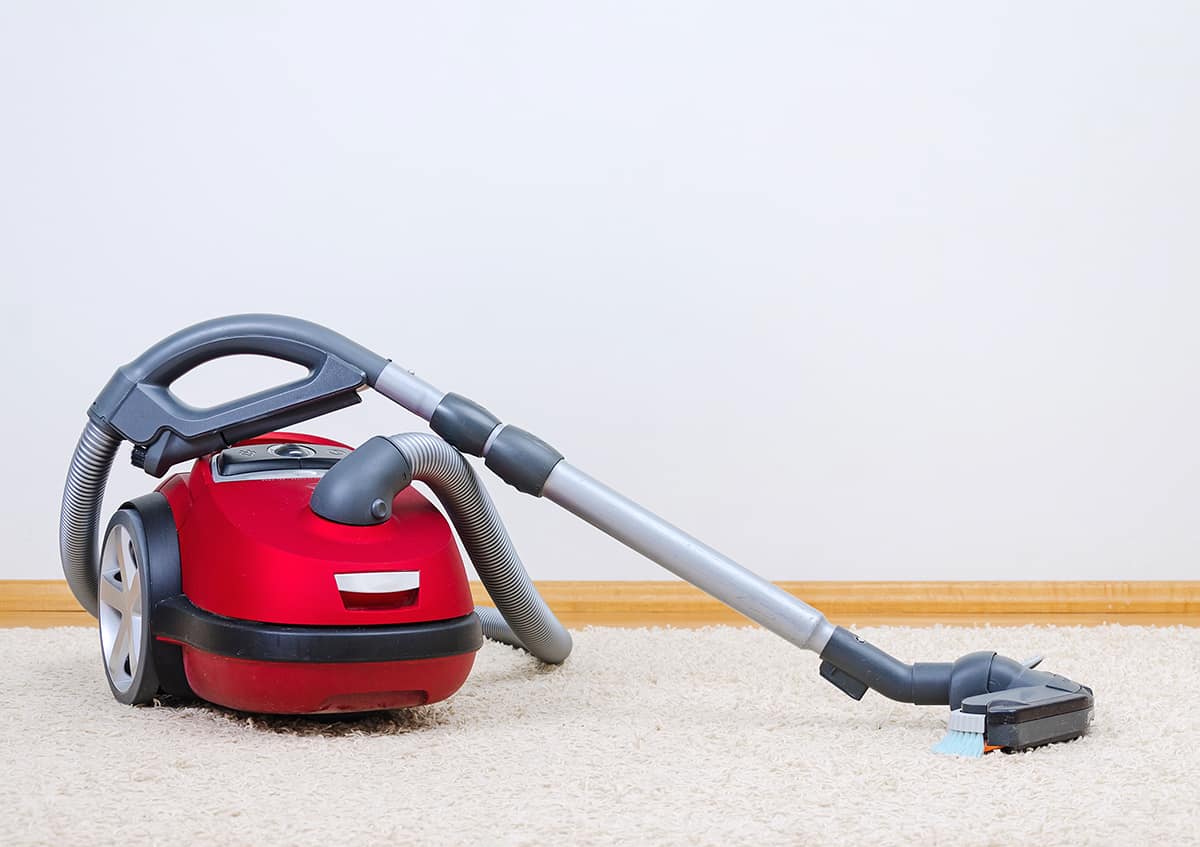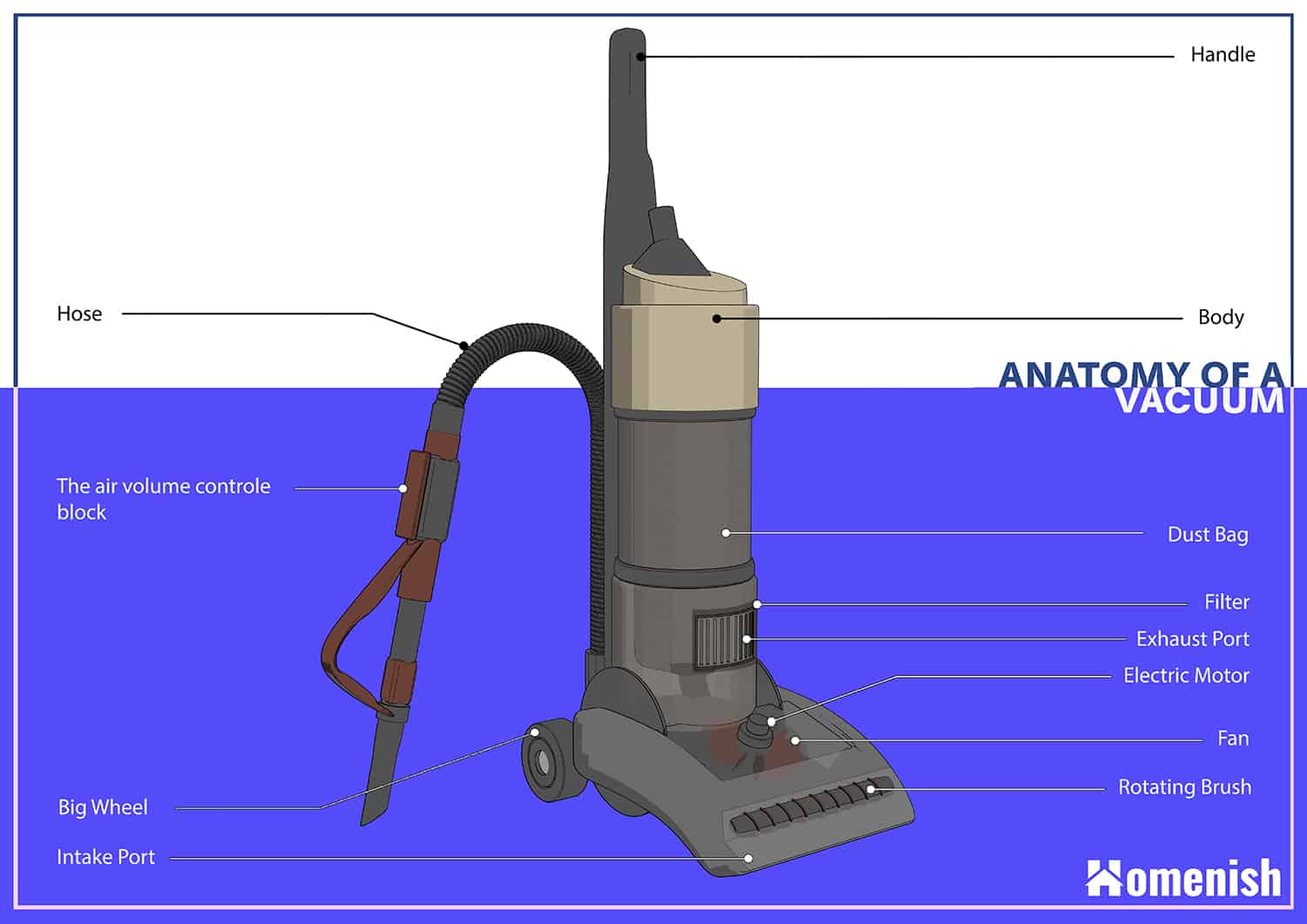Most homeowners rely on their vacuum to tackle so many cleaning tasks around their house, such as sucking up pet hair off the sofa, crumbs off the kitchen floor, and dust off almost any surface in the home!
If you have ever had a vacuum break down or suddenly lose suction, then you will have realized just how lost you can feel without a vacuum to freshen up the rooms in your house.
Although a vacuum is considered as an essential appliance for most people, it probably isn’t something you think too much about. In fact, many homeowners have no idea at all how a vacuum works or which parts make up the whole appliance until it goes wrong.
When a vacuum stops working efficiently, then the user will start to consider what the issue could be. High-quality vacuum cleaners cost hundreds of dollars, so replacing one at the first sign of a problem isn’t typically the best option.
If you want to figure out what is going on with your vacuum, then first you need to get to grips with the different parts of a vacuum, what they look like, what they are called, and how they work. Here we address all of these points.
Table of Contents
Motor
The motor is the beating heart of the vacuum, which will determine how fast the blades of the vacuum spin. The motor is the heavy part of the appliance that can make it difficult to move around the house, but it is an essential part that the vacuum simply cannot function without. The power capacity of the motor is what differentiates an average vacuum from an incredible vacuum.
Typically, a vacuum motor will have a wattage of around 1600, but this number is what you really need to pay attention to when shopping for a vacuum. The higher the wattage of the motor, the more likely your vacuum is to have amazing suction power.
When a motor on a vacuum fails, then the entire vacuum will be rendered useless. Fortunately, when you buy a vacuum from a high-end retailer, you can usually expect the motor to be covered by a five-year warranty.
Internal fan
The internal fan is vital in creating suction for the vacuum. The fan features angled blades that push air through the vacuum and towards the filter as they spin.
The speed at which the fan spins is determined by the motor, so it is these two components that work together to create the suction needed for a really good clean.
The fan is also responsible for guiding dust, dirt, and debris into the bag or cylinder where it gets stored before being emptied into the trash.
Intake and exhaust ports
The intake port is what allows a continuous flow of air to be sucked into the vacuum, while the exhaust port is the component through which air is expelled out of the vacuum and back into the room.
The vacuum works by sucking air in via the intake port, and as it does so, it also sucks in dust and dirt. The inner workings of the vacuum guide the dirt and air through various parts, trapping the dust and dirt in filters and then returning the air back to the room via the exhaust port.
If you lose suction on your vacuum, then this is a sure sign that your intake port is blocked. When this is blocked, air cannot flow through, and the suction noticeably drops.
You can usually check the intake port for blockages, as directed in your vacuum manual. This is an easy fix, which will be resolved as soon as you empty the clogged hair or dirt out of your intake port.
Internal filter
The internal filter is responsible for catching all of the dust and debris that your vacuum sucks in. As we know, the air enters the vacuum via the intake port and exits the vacuum via the exhaust port.
If you didn’t have a filter, then the exhaust port would be expelling dirty air back into your home. This is why a good filter is an essential part of a vacuum, as it will stop dust, dirt, and bacteria that the vacuum has sucked up from being dispersed back around your room.
The internal filter needs to be regularly cleaned to prevent it from getting clogged up, ensuring it will work effectively. If your vacuum is losing suction and you have checked that your intake port is not blocked, then you should clean your internal filter as this can make a big difference.
If the filter gets badly blocked, then it can slow the intake of air which will read as poor suction. There are two main types of filters that come in vacuums, and it’s important to know the difference when shopping for vacuums, especially if you have allergies.
The gold standard of vacuum filters is HEPA filters, also known as true HEPA filters. These filters do an incredible job of removing pollutants from homes since they are able to trap 99.97 percent of allergens and bacteria.
The other type of filter is a HEPA-style filter, which is modeled on the true HEPA filter but isn’t quite as successful at trapping pollutants. A HEPA-style filter can vary in performance, with some being capable of trapping up to 99 percent of bacteria and allergens and some falling around the 85 percent mark.
The size of particles that these types of filters trap can vary, and the quality of the air in your home can suffer as a result. True HEPA filters are the safer bet, but they are also, unsurprisingly, more expensive to buy.
Power source
Vacuums are powered by either a corded plug going into a mains power outlet or a rechargeable lithium-ion battery. A battery-powered vacuum is much more portable; however, it will need to be charged frequently and cannot run for as long as its corded counterpart.

